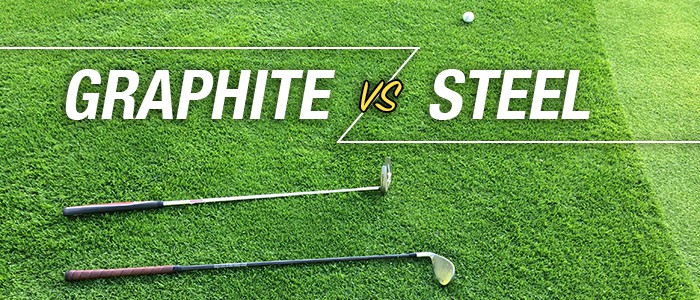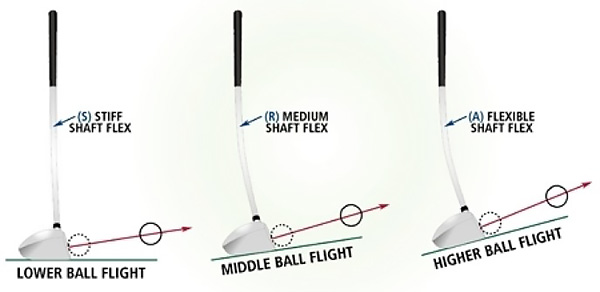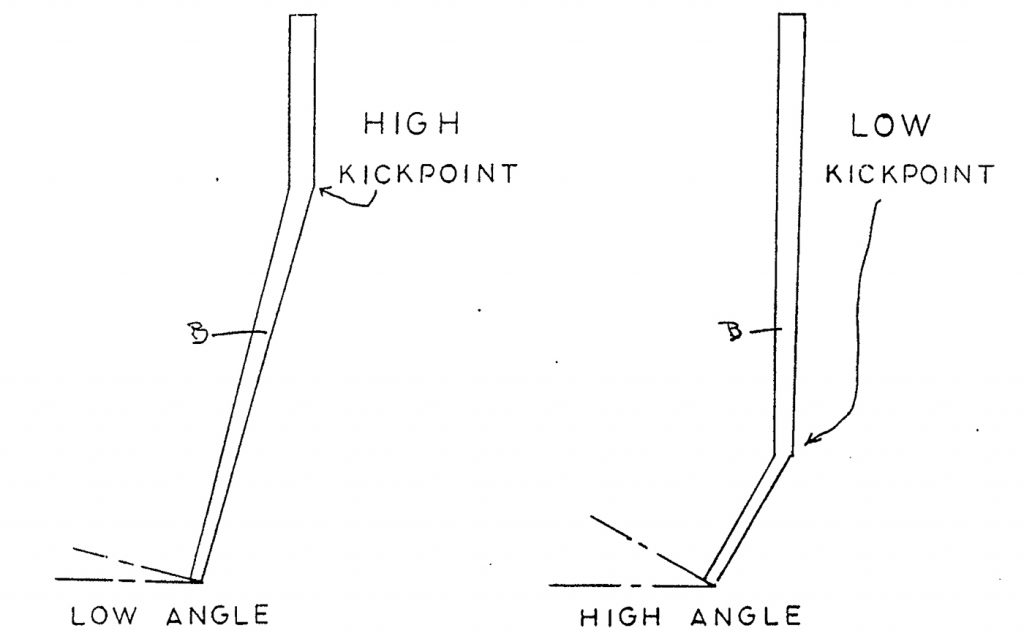
What golf shaft flex is right for me? What are the different types of golf shafts out there? How does the golf shaft weight matter? These are questions that need to be answered. And answered properly. In that case, welcome to the ultimate beginner’s golf shaft guide.
I’m going to walk you through each and every important aspect related to all kinds of golf club shafts. Like choosing the best driver shafts for distance. Or looking at the ultimate golf shaft comparison chart. So let’s begin right away!
Table of Contents
Beginner’s Golf Shaft Guide
1. Types of Shafts

The first type of golf shaft is made of stainlesssteel material. These shafts are more durable and stronger. And even less expensive. When stainless steel is not used, carbon steel is used. The benefit of using steel shafts is that they put control and accuracy back in your hands. On the downside, you have to have a faster swing speed for this one.
The second type is the graphite shaft. It’s more expensive, less durable, and lighter in weight. Graphite shafts boost swing speed to generate more power. Unlike their steel counterparts. However, they eat up most of the control.
Then comes multi-material shafts made of both graphite and steel. You get the control of steel and the distance of graphite.
2. Shaft Flex

The flex of a golf club shaft decides the direction and distance of the ball. It’s the ability of the shaft to bend at the time of your swing.
With a faster swing speed, you require minimal flex. While a slower swing speed and greater flex go hand in hand.
| SWING SPEED | DISTANCE | SHAFT FLEX |
| Below 75 miles per hour | Below 200 yards | Ladies or Senior Shaft |
| 75-95 miles per hour | 200-240 yards | Regular Shaft |
| 95-110 miles per hour | 240-275 yards | Stiff Shaft |
| Above 110 miles per hour | Above 275 yards | Stiff or Extra Stiff Shaft |
3. Shaft Torque
In simple words, shaft torque is nothing but the twisting motion of that shaft during your swing. It is denoted in the unit of degrees.
When the shaft torque is higher, it means the shaft twists more. And vice versa. With more torque, you also get more softness. This means 3 degrees feel stiffer than 5 degrees.
Another thing you might want to know is that a lower torque produces a lower trajectory.
4. Shaft Kick/Flex-Point

The point where your golf club shaft bends and ultimately affects the trajectory is known as the kick or flex point.
A higher rating here implies a lower trajectory. And the shaft, at such times, offers a more “one-piece” feel. As opposed to a lower kick-point that feels like you’re whipping that clubhead through. For a higher trajectory of course.
5. Shaft Weight
It’s very simple here. With a lighter shaft weight, you can achieve extra clubhead speed. This meansan additional distance. So if you have a problem with generating distance.Then you know you have to pick a lightweight shaft. And that is a graphite shaft.
6. Shaft Tip
When the shaft tip is parallel, its diameter is the same for a particular distance from the tip. As for a tapered shaft tip, it reduces in diameter up to a specific spot on the tip. The former has a descending weight across the set. While the latter has constant weight. This means the shaft weight remains the same from wedges to long irons.
7. Shaft Length

First off, you have to measure the length of the golf club. For that, tell someone to measure the distance between the floor and the point where your hand and wrist meet. Measure both hands and get the average. Now based on that measurement, choose the correct shaft length.
- For 29 to 32 inches, shaft length is 37 inches.
- For 33 and 34 inches, shaft length is 37.5 inches.
- For 35 and 36 inches, shaft length is 38 inches.
- For 37 and 38 inches, shaft length is 38.5 inches.
- For 39 and 40 inches, shaft length is 39 inches.
- For 41 inches and higher, shaft length is 39.5 inches.
Just keep two things in mind. That a longer shaft delivers greater distance. And the second thing is that when choosing a driver, get the longest shaft to produce solid shots consistently.
The End
This brings me to the end of the ultimate beginner’s golf shaft guide. I hope now your basics are in order. So you can go about choosing the best golf club shaft for your game.
Shafts have the ability to transform your golf game, no doubt. For example, a lighter shaft allows you to hit the golf ball farther. And so does reduced shaft flex stiffness. For a straighter ball flight, go for a heavier or stiffer shaft. For getting the ball higher, make sure the shaft kick-point is lower.
So you see how the shaft you pick can change your game on the course?
Author Bio:
Tanya Howard is the reason why the blog Golfing Joy is such a bundle of information about golf. She is the sole founder of the platform and the sole writer. Her goal is to keep creating articles that other golfing enthusiasts can relate to. Reading posts about the game of golf and golfing equipment from the perspective of an experienced, talented, and knowledgeable golfer is always a great idea.

